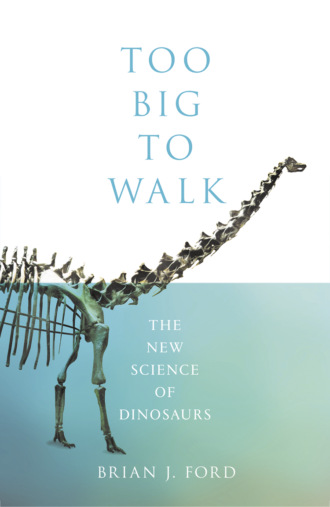
Полная версия
Too Big to Walk: The New Science of Dinosaurs
Calder’s book followed a mammoth BBC television documentary in which he warned us that an ice age was imminent. However, a survey of all the scientific publications on climate in the 1970s shows that only 10 per cent upheld the idea of a new ice age. Even then, most academic opinion was beginning to point to the era we are now experiencing – a time of rising temperatures.43 Most papers were typified by one in Science in 1975, in which Wally Broecker coined the term ‘global warming’.44
This prediction can be traced back to the Swedish scientist Svante Arrhenius, who discovered the relationship between carbon dioxide in the air and the temperature of the atmosphere as long ago as 1896.45 Arrhenius followed this in 1908 with a book in which he suggested that we should expect a gradual warming of our world. He calculated that a doubling of the CO2 in the atmosphere would raise Earth’s average temperature by about 10°F (5–6°C) – an estimate still used by many researchers today.46
Between 1938 and 1957 a British engineer named Guy Callendar published a series of 26 papers that set out to relate the atmospheric increase in CO2 to rising temperatures. Then in 1953 Canadian physicist Gilbert Plass reviewed Callendar’s results and calculated that, if the concentration of atmospheric CO2 were to double, the global temperature would rise by about 7°F (3–4°C). This was a meticulous and important paper, but it was ignored by scientists. Plass was a professor at Texas A&M University when writing his paper and, because his university was regarded as undistinguished, his crucial conclusions were ignored. Academic snobbery drowned his prescient proposal.47
For those who want to see more of the way in which those pioneering investigations of climate change have matured into today’s concerns, the most authoritative book on the subject is the splendid volume Experimenting on a Small Planet by William Hay, Professor Emeritus at the University of Colorado in Boulder.48 The first edition appeared in 2013 and runs to some 1,000 pages. It tells a curious story and is excellent bedtime reading, although, as we know, no book on the future of our climate is destined to have a happy ending.
Конец ознакомительного фрагмента.
Текст предоставлен ООО «ЛитРес».
Прочитайте эту книгу целиком, купив полную легальную версию на ЛитРес.
Безопасно оплатить книгу можно банковской картой Visa, MasterCard, Maestro, со счета мобильного телефона, с платежного терминала, в салоне МТС или Связной, через PayPal, WebMoney, Яндекс.Деньги, QIWI Кошелек, бонусными картами или другим удобным Вам способом.




